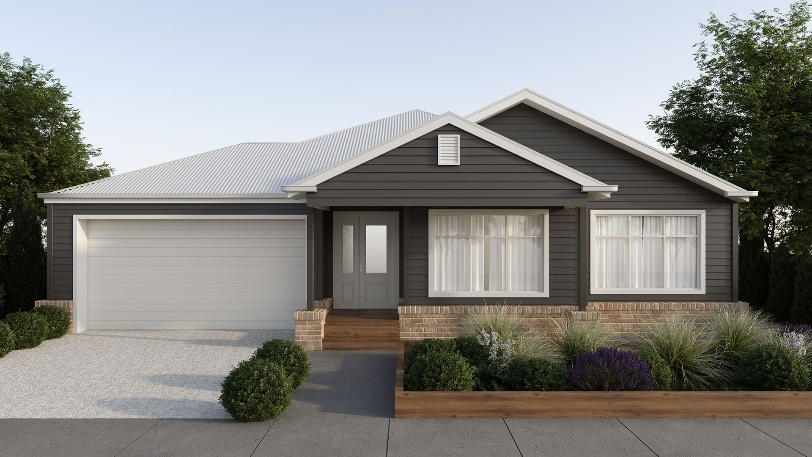Sustainable and Stylish: 6 Tips to Build a Future-Ready Home for Your Family and Environment
Building a home is a major undertaking and requires careful planning and consideration. The concept of building sustainable homes has gained significant popularity as people want to create a better future for their families and the planet. A sustainable home reduces our ecological footprint and provides a healthier and more efficient living environment for our loved ones. Here are a few tips from our builders in Warragul that will help you build the perfect sustainable and stylish home.
Prioritise Energy Efficiency:
Do you want to create sustainable and future-ready homes? Then, prioritising energy efficiency should be a top consideration. This means looking at all aspects of the home, from insulation and windows to appliances and lighting. By choosing energy-efficient options, you can reduce your energy consumption, save money on utility bills, and minimise your carbon footprint. Some simple steps to prioritising energy efficiency include ensuring your home is well-insulated and properly sealed, choosing LED lighting over traditional bulbs, and more. With these small changes, you can create a home that is both eco-friendly and budget-friendly.
Invest in Renewable Energy Sources:
Solar energy is a popular choice for homeowners looking to generate their own energy and reduce their reliance on the grid. Solar panels can be installed on rooftops or in the yard, and they convert sunlight into electricity to power your home. Similarly, wind turbines can harness the power of the wind to generate electricity. While the upfront cost of installing renewable energy systems may be higher than traditional energy sources, the long-term savings on energy bills can be significant. Also, renewable energy systems can increase the value of your home and attract eco-conscious buyers in the future.
Incorporate Sustainable Building Materials:
Traditional building materials such as concrete and brick can be resource-intensive, and their production can generate a significant amount of greenhouse gas emissions. By choosing sustainable building materials, you can significantly reduce the environmental impact of your home while still creating a stylish and functional living space. When selecting sustainable building materials, make sure to consider their environmental impact, durability, and maintenance requirements. Also, it’s crucial to work with the leading home builders in Warragul, who can help you choose the right materials for your home.
Design for Natural Lighting and Ventilation:
Creating a well-ventilated and well-lit home is essential for a healthy and comfortable living environment. Not only does natural light provide warmth and brightness, but it also enhances mood and boosts productivity. Meanwhile, good ventilation ensures clean and fresh air inside the house. Here are some tips for designing your home with natural lighting and ventilation in mind:
Consider the orientation of your home. The placement of your windows and doors can maximise the amount of sunlight that enters your home. For example, south-facing windows get more sunlight during the day, while north-facing ones receive less.
Install large windows or skylights to let in more natural light. This is especially important in areas where natural light is scarce, like basements or inner rooms.
Use reflective surfaces to bounce natural light around the house.
Incorporate shading devices like blinds or curtains to control the amount of sunlight that enters your home. This can help regulate the temperature and prevent overheating in the summer.
Use natural ventilation systems like open windows or vents to bring in fresh air and regulate indoor temperatures. This can reduce the need for air conditioning and save on energy bills.
Optimise Water Conservation:
Water conservation is an important aspect of building a future-ready home that is not only sustainable but also saves you money on your utility bills. By adopting eco-friendly water practices, you can help conserve this precious resource and contribute to a greener future for your family and the environment. Here are some tips to help you optimise water conservation in your home:
Replace your traditional showerheads, faucets, and toilets with low-flow alternatives that use less water. These fixtures not only save water but also reduce the amount of energy needed to heat water, thus helping you save on your utility bills.
Instead of using fresh water for your outdoor plants, consider using greywater, which is the relatively clean wastewater from your bathroom sinks, showers, and washing machines.
Choosing plants that are native to your area and drought-resistant can help you save water while still maintaining a beautiful landscape. Such plants require less water and are better suited to the local climate.
Collecting rainwater from your roof and storing it in barrels can provide you with a free and abundant source of water for your garden. You can use this water to water your plants, wash your car, or even flush your toilet.
Implement Smart Technology for Greener Home:
Did you know incorporating smart technology into your home can take your sustainability efforts to the next level? Smart technology allows for the automation and control of energy use, which can result in significant energy savings over time. Here are a few ideas inspired by a display home in Warragul:
A smart thermostat allows you to control the temperature in your home remotely, so you can adjust it when you’re not there to conserve energy.
Smart power strips automatically shut off power to devices when they’re not in use, preventing energy loss.
Smart lighting systems can be programmed to turn off when no one is in a room, saving energy.
Smart irrigation systems use sensors to determine when your lawn or garden needs water, preventing over-watering and conserving water.
